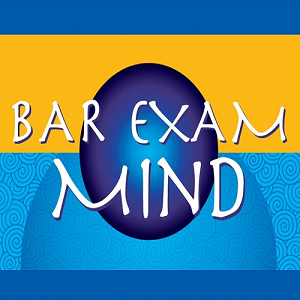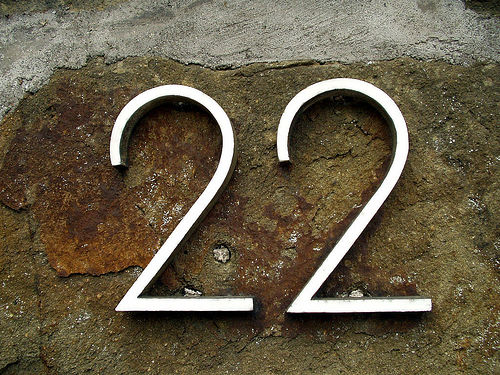2. Create a Plan of Study
Most bar preparation courses provide you with a study plan. The most well-known is BarBri’s catchily-named “PACED Program.” When I took BarBri for the Oregon exam, I tried to follow the PACED program for about . . .1 day. It was clear to me that I would never have time to do all the work. Don’t forget, the PACED Program is on top of the admonition from PMBR to do at least 50 sample MBE questions per day or risk utter destruction on the bar exam.
I had a wife and two children, and I was not going to abandon them for 70 hours a week so that I could keep up with some study program that BarBri probably created just to say to people who failed the bar, “Well, did you do everything on the PACED program?” “No.” “Well, that must be why you failed; it couldn’t be our materials.” Still, if you think the PACED Program will work for you, then follow it. I think it is unrealistic. Nevertheless, the decision to not follow the program can induce great anxiety in some people. Relax. Ask around; I bet very few of your friends and colleagues are keeping up with the PACED program either.
So, now that you have abandoned an unrealistic study program, what do you do? Design one for yourself. How do you design a study program for yourself? You need to look at the information you need to learn, the amount of time you have to learn it, and your tolerance for sitting all by yourself reading black letter law, doing sample MBE questions, and writing out endless essays and performance tests.
I will use my study plan for the California bar exam as an example. The California bar has between 13 and 18 subjects (depending on how you count) from which the bar examiners may draw essay questions. These subjects overlap with the six subjects on the MBE. There are also two, three-hour Performance Tests, which require little knowledge of the law, but require practical skills to digest, organize, and write out the information into a coherent and high-scoring answer. Since I had recently relocated to California and was not working, I would be able to study whenever I wanted to for the February 2008 exam. Moreover, since I had recently taken the BarBri lecture course for the Oregon bar and was not about to waste $2500 and 2 hours a day commuting to the BarBri lecture course, I decided to study on my own with the BarBri California books and AdaptiBar for the MBE.
Given all that, I had decided to study from January 7 until February 25 in preparation for the test on February 26, 27, and 28. This is seven weeks of study time, during which I promised myself I would not study on weekends except for the weekend immediately prior to the exam. Thus, studying for seven weeks for 5 days a week gave me 35 days. Now, I could not study at home because it was too distracting. I did not live near a law school, so I could not study at a law library. Any attempt to study at a coffee shop or bookstore is insane (due to the unending external distractions) and should never be attempted. Therefore, I had to study at the local public library. Because the library did not open until 9am, that meant that I had an enforced starting point. The library was open until 9pm Monday-Thursday, but closed at 5pm on Friday. Because I wanted to make each day the same, I promised myself that I would end at 5pm or earlier. If I take out an hour of time for a 30 minute lunch and some breaks, then I have 7 hours per day to study, or 245 total hours during which I would study for and pass the bar. Another bonus to this schedule is that it roughly approximates the hours during which the bar examination is administered.
As I discuss more in the “Anticipation of Conditions” post, it is important to train your mind and body to be at peak performance during the correct hours of the day. Now, within those hours, I had to prioritize. I am a pretty good essay writer, so I knew that I could practice writing comparatively less than the multiple choice questions. On the other hand, the written portions of the California bar exam account for 65% of the final score, so if I were a weak writer, I would focus on that for probably 70% of my study time. In fact, an anonymous California bar grader has stated in an interview that she had only seen one instance of someone who clearly passed the written portion fail the bar due to low MBE scores. On the other hand, she had seen countless instances of people who received scores well above passing on the MBE (e.g., a 152 raw!) fail because they did not pass the written portions of the examination. In short, I realized that one must study and practice the essay and PT portions of the bar exam thoroughly.
I reviewed two subjects a day until all subjects were covered. From 9am until Noon, I quickly read a BarBri outline in the Conviser Mini Review, then went through it slowly and typed out my own condensed outline, working quickly enough to get it done by Noon. Then, I took a lunch break. After lunch, I did the same thing with the next topic. I made sure that I finished by 4pm. Then, I went to the California bar website and read as many essays and model answers on each of the day’s two topics as I could. When I was too tired or it was 5pm, I went home.
After about 8 days of this, it was time to review my outlines and do practice questions. Again, I would do two topics per day and include 50 or more MBE questions from AdaptiBar. So, for instance, I might review community property in the morning and write out 1 or 2 essays. Then after lunch I would do torts and write out 1 or 2 essays. While reviewing each outline, I would also make flash cards for any rule of law that had more than one element (e.g., negligence, burglary, all constitutional law balancing tests, etc.) and for the points of law that seemed difficult for me. Finally, I would do 50 torts questions and then go home. Repeat this pattern of doing a California-specific topic in the morning and an MBE topic in the afternoon until all 6 MBE subjects are reviewed. Then, finish up with the remaining California-specific topics and doing random MBEs in the late afternoon. Finally, interspersed within this schedule I had at least one 4-hour block per week where I wrote out a PT in its entirety and then reviewed the sample answers. Note all essays and PTs should be those posted on the California bar website. There you can see well-written answers by actual takers. Reality is important.
Starting about the third week of my studies, I began to create what I call “Issue Pairing” charts. These are charts that allow quick reference to topics that are often tested together. In my opinion, it is not enough to know that when a Wills question is asked you should go through the elements of a valid formal will. You should also know the esoteric points that the bar examiners are likely to ask about. You learn these by going through the essays on the bar website and writing down these issue pairing charts for each topic. CLICK HERE for two examples.
As you can see, each issue statement is fairly straightforward, but then the issue pairing chart expands on the detail of analysis available to you. These charts do not mean that if an essay asks about a document created after a will was executed that you should discuss all the points in the chart, it just means you should think about them. I find issue pairing charts better than mere checklists because they actually help you see the law as a web of possibilities rather than a line from Problem A to Answer B. The bar graders want to see you analyze rather than regurgitate, and using issue charts based on prior essays is a great way to do this.
Finally, about two-weeks before the exam, I started to spend more time reviewing the topics that seemed most difficult for me. For instance, I went to law school in Oregon and never took a community property course, so it was a more difficult topic to review than criminal law. Therefore, I set aside two days during that final period to spend significant periods of time studying community property. Whichever state’s bar exam you are taking, you will likely have one or two topics that seem more difficult than the rest.
CLICK HERE for a link to my study schedule for the February 2008 California Bar Exam.
3. Know When You Have Studied Enough
As you can see from my account of my study schedule and a review of my study schedule chart, I packed a lot into each day. The central point is to treat studying like a job: get to work the same time each day, bust ass, and then go home and do something else. The process of studying, like the act of working, should not be constantly present in your life.
What you do not see on my study chart are the afternoons when my brain was fried. I literally felt like I could not learn a single additional piece of information; in fact, it felt like I was forgetting things. If this feeling continued for more than about twenty or thirty minutes, I just stopped studying. But, I stayed at the library and did something else: read a book about tomatoes, grabbed a DVD and watched it on my computer, stared out the window. Sometimes, I would be refreshed and feel like studying again; other times, I would just stay at the library until 5pm and then go home.
You also must know when you have studied enough in the larger sense. If you are reviewing your criminal law outline and realize that you know everything on it, then stop reviewing it. Spend the time learning something else. If you are still several weeks out from the bar exam, be sure to go over the criminal law outline once a week instead of two or three times, and keep up the practice criminal MBE and essays. What you are hoping to get from studying is a moment of calm where you are at peace with the subject you are studying. If you have ever had this feeling when studying for a college or law school test, then you already know what you are going for with the bar exam.
Post Script: What Diligence is NOT
Having discussed at length what I mean by diligence, it is important to note briefly what diligence is not. Diligence is not masochism. I have already mentioned that I believe one can pass the bar by studying for 7 or 8 hours per day and taking off weekends. I believe it because that is what I did when I passed the California bar. “But you had already taken a bar exam!” you may protest. True, but I studied only a little more when I took the Oregon exam. I did about 8 hours per day on the weekdays and added another 4 or 5 hours each Saturday. In retrospect, it was unnecessary to study on Saturday.
Please note that a form of masochism is to live in psychic state of fear of failure. If you really cannot believe that you will pass the bar without studying on the weekends, then go ahead and study on Saturday or Sunday, but not both days. You must have at least one day off. It is best if you don’t think about the bar exam on that day at all, but you probably will. Just commit to not looking at or listening to any study materials.
You will succeed!
***
P.S. -- Want a FREE copy of my Bar Exam Mind audiobook?
You can get a free copy of my audiobook when you sign up for a free trial at Audible. Get the details by clicking here.





